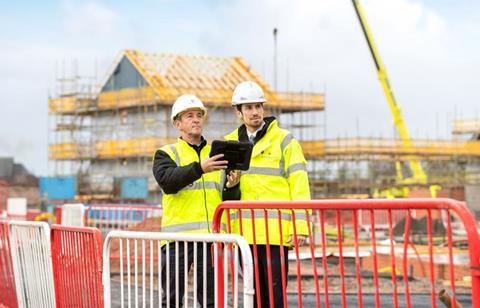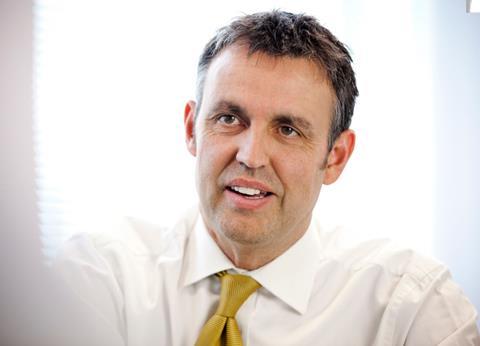
One of the most significant challenges for housebuilding organisation Barratt Developments is attracting and retaining talented people against the backdrop of a major skills crisis in the construction industry.
Influenced by the government’s commitment to build 300,000 new homes every year, an ageing workforce, and a lack of younger skilled employees joining the profession, the war for talent is fierce in this sector.
Rob Tansey, group HR director at Barratt Developments, says: “What we have seen in the market is that, although we’ve managed to get the skills we need, we have to pay more for them because there’s a limited supply.
"In that context, there are two primary objectives: one is to get skills from other sectors and from other routes, which we’re working hard on. We’ve managed to get skills and talent from other areas that we wouldn’t traditionally have done. But the other objective is to keep the talent that [we have] got.”
It is these objectives that lie behind Barratt Developments' reward philosophy. “Benefits need to attract and retain talented people, they also need to be flexible to meet the needs of those individuals,” Tansey explains.
“It’s not just about pay and rations anymore; the things that certainly some of the younger [employees] want from work in some respects are very different from what some of the [older employees] want. So we have to be able to cater [to everyone].
“Strategically, we always position ourselves as a median-to-upper-quartile payer, and looking at total reward, we like to think we are in that place within our sector. But we accept that because there is such a wide range of benefits that [we] give to [our] workforce, in reality [we] can’t be median and upper quartile in every one of them, so [we] just have to pick and choose.”
Changing employee expectations
In order to uphold its benefits philosophy, Barratt Developments has made some important changes to its reward package in the last 12 months.
One of these was to introduce a new self-service HR platform in April 2019, My HR, through which staff can see all information relating to their pay and core benefits. The organisation also has a benefits platform, My Barratt Benefits, which hosts a voluntary scheme including a range of discounts on products such as shopping and holidays, and a flexible benefits scheme which provides benefits such as a health cash plan, gym membership, and the ability to buy or sell up to five holiday days per year.
Barratt Developments has also made some changes to its policies, including moving to enhanced maternity and paternity pay and leave offerings mid 2018. This sees eligible employees receive basic pay for the first 18 weeks of maternity leave, and a further 21 weeks at the statutory rate, and two weeks of paid paternity leave at their basic pay rate.
It also introduced a benefit for carers in January 2020, which consists of three days paid leave per year, with the option to take the leave in hours. Additionally, the employer introduced paid assisted fertility leave, regardless of gender, of up to two days per cycle of treatment.
Invested in the business
As of January 2020, Barratt Developments received accreditation as a living wage employer, marking its commitment to paying all employees, including those in its supply chain, a minimum hourly wage of £9.30, or £10.75 in London.
More than just paying a fair wage, the organisation uses remuneration as part of its approach to engaging staff with the business long-term. For example, every employee receives an annual bonus based on individual performance and business results.
Further to this, Barratt Developments introduced a share award in 2018. The scheme awards all employees in the organisation with a one-off share bonus which vests in two years. Staff were awarded the bonus in 2018 and again in 2019 after the organisation announced a record trading year.
“We were keen to look at more opportunities to give our wider workforce a stake in the business,” says Tansey. “We want to be in the position where we can do this every year if possible, because it proves to be a very popular benefit, and one that [means] the workforce can share in the success of the organisation.”
The business also runs long-term incentive schemes (L-tips) for senior managers, and sharesave schemes, which have high take-up rates. “Over the years, we’ve encouraged our workforce to take advantage of our [sharesave] schemes, we introduce those as regularly as we can,” says Tansey. “The current participation in our schemes is 43%, we’re very proud of that.”
Benefits communication
With such a dispersed workforce, from on-site bricklayers to office-based executives, Barratt Developments needs to take careful consideration around how it communicates its benefits provision, especially as many manual workers do not have work email addresses.
To do this effectively, the organisation uses multiple approaches. Tansey says: “What we try to do is cater for everybody. We have an intranet that we are constantly populating with information about the benefits. We write to people from time-to-time, we email those that are on email, and we do total reward statements [TRS] for every employee every year.”
Barratt Developments also makes sure that on-site and in divisional offices there are noticeboards with relevant information and promotions, as well as using line managers to cascade communications through the workforce.
The introduction of its My HR platform also opens up another avenue of digital communications, beyond simply allowing staff to easily view their pay and benefits packages.
Retaining key talent
As the challenge of attracting skilled employees looks to remain for the foreseeable future, so Barratt Developments will continue to use its benefits offering as leverage to retain staff.
“We have to have a compelling proposition for the workforce,” says Tansey. “But when we look at what we’ve provided our current workforce, we’ve listened to what they want, what they need and what they would like. What we’ve done is respond to that, so that as long as we are meeting their expectations and their needs, then we’ve got a better chance of keeping them.”
At a glance
Barratt Developments has 6,500 employees working in roles that range from bricklayer to site manager, land buyer, architect, and sales executive.
The average length of service is 6.5 years, and the workforce is 70% male, 30% female. Two-fifths (40%) of employees are aged below 35, 47% are between 35 and 54, and the remainder are aged 55 and above.
Business objectives that impact employee benefits
- To grow the business with a focus on quality and customer service, driven through an incentivised workforce.
Career history

Rob Tansey, group HR director, joined Barratt Developments in August 2012. Prior to this, he held positions as HR director at Dairy Crest and HR director at Travis Perkins.
While at Dairy Crest, one of the most important projects Tansey was involved in was the closure of a pension scheme. This required building a close working relationship with the trade unions, to ensure that the transaction went smoothly for all involved.
While the closure was a difficult decision for the employer, it was necessary in a difficult financial environment. “It was done in a very constructive way with the full support of the trade unions,” says Tansey.
While at Barratt Developments, Tansey has helped to develop its reward strategy to include a share award given to all employees in the organisation. “The introduction of [the scheme] for the whole workforce is another important initiative that I’m most proud of,” he concludes.
















